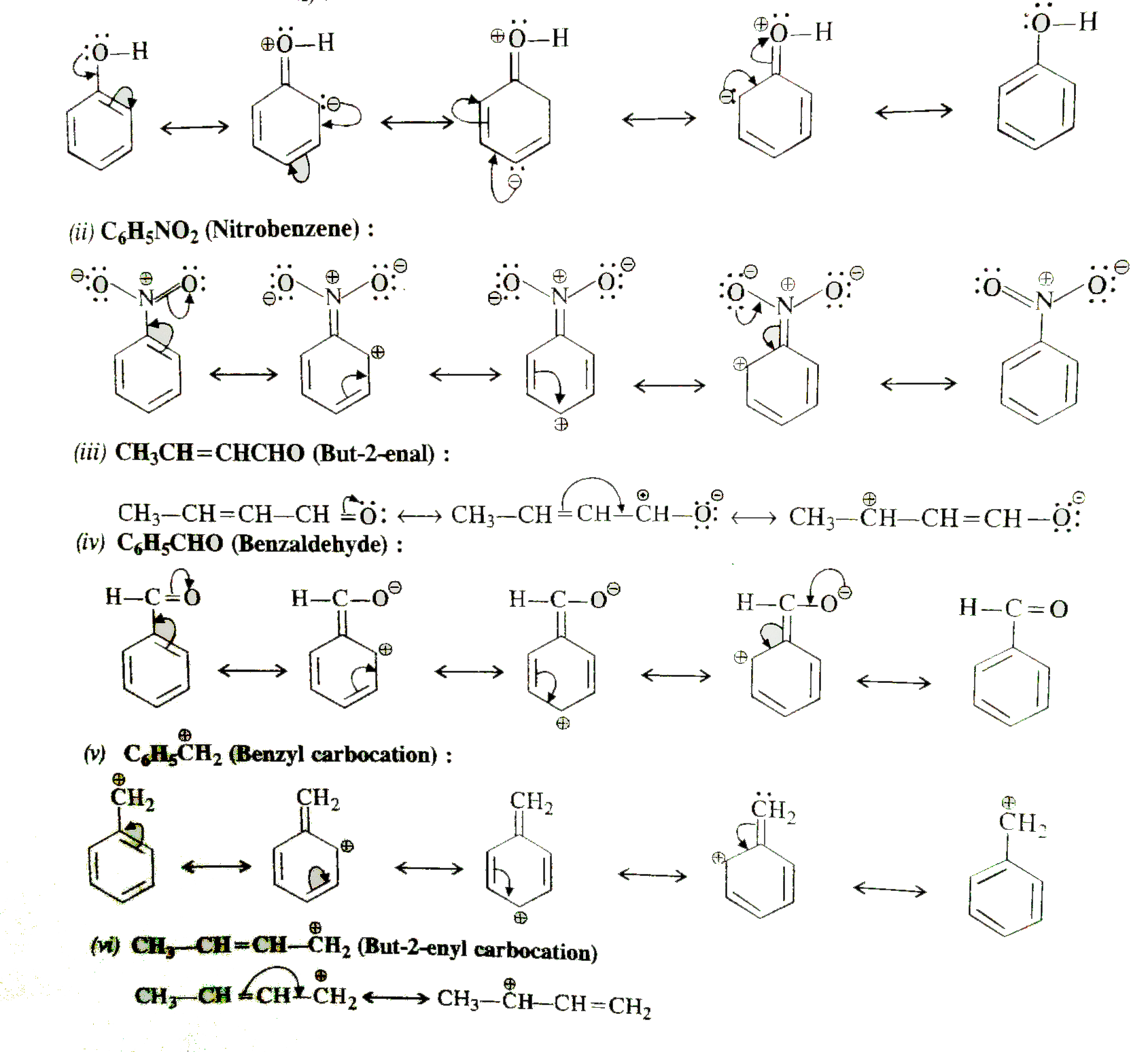Draw the resonance structures for the following compounds. Show the electron shift using curved-arrow notation.
(a) C6H5OH (b) C6H5NO2 (c) CH3CH=CHCHO (d) C6H5–CHO (e) C6H5−+CH2 (f) CH3CH=CH+CH2
Topper's Solved these Questions
- ORGANIC CHEMISTRY - SOME BASIC PRINCIPLES & TECHNIOUESBOOK - DINESH PUBLICATIONCHAPTER - ORGANIC CHEMISTRY - SOME BASIC PRINCIPLES & TECHNIOUESEXERCISE - SHORT ANSWER TYPE QUESTION
33 Videos
- ORGANIC CHEMISTRY - SOME BASIC PRINCIPLES & TECHNIOUESBOOK - DINESH PUBLICATIONCHAPTER - ORGANIC CHEMISTRY - SOME BASIC PRINCIPLES & TECHNIOUESEXERCISE - CONCEPT BASED QUESTION
45 Videos
- ORGANIC CHEMISTRY - SOME BASIC PRINCIPLES & TECHNIOUESBOOK - DINESH PUBLICATIONCHAPTER - ORGANIC CHEMISTRY - SOME BASIC PRINCIPLES & TECHNIOUESEXERCISE - PURIFICATION & CHARACTERISATION OF ORGANIC COMPOUNDS
38 Videos
- NUCLEAR AND RADIO CHEMISTRYBOOK - DINESH PUBLICATIONCHAPTER - NUCLEAR AND RADIO CHEMISTRYEXERCISE - Evaluate Yourself
45 Videos
- P BLOCK ELEMENTS (GROUP 13 AND 14 )BOOK - DINESH PUBLICATIONCHAPTER - P BLOCK ELEMENTS (GROUP 13 AND 14 )EXERCISE - Straight obj.
17 Videos
Similar Questions
Draw the resonance structures for the following compounds. Show the electron shift using curved-arrow notation.
(a) C6H5OH (b) C6H5NO2 (c) CH3CH=CHCHO (d) C6H5–CHO (e) C6H5−+CH2 (f) CH3CH=CH+CH2
View SolutionDraw the resonance structures for the following compounds. Show the electron shift using curved-arrow notation.
(a) C6H5OH
(b) C6H5NO2
( c) C6H5⊕CH2
(d) CH3CH=CHCHO
( e) CH3CH=CH−⊕CH2
(f) C6H5CHO
(g) CH2=CHOCH3.
View Solution
Knowledge Check
C6H5−CH=CH−CHO is
ABenzaldehydeBSalicylaldehydeCCinamaldehydeDNone of these.Rank the following compounds in the order of decreasing reactivity for bromination
C6H5−⊕NMe3,C6H5−CH2−⊕NMe3,C6H5−NMe2,C6H5−CH3A3>4>2>1B1>3>4>2C3>4>1>2D4>3>1>2The decreasing order of reactivity of the following compounds in SN1 reactions is _________.
(i) C6H5CH2Br (ii)C6H5CH(C6H5Br
(iii)C6H5CH(CH3Br (iv)C6H5C(CH3)(C6H5)BrA(i)>(ii)>(iii)>(iv)B(iv)>(iii)>(ii)>(i)C(iv)>(ii)>(iii)>(i)D(iii)>(ii)>(i)>(iv)
Distinguish between : (ii) C6H5COCH3andC6H5CH2CHO.
View SolutionWhich of the following compounds will show cis-trans isomerism?
(i) (CH3)2C=CH−C2H5
(ii) CH2=CBr2
(iii) C6H5CH=CH−CH3
CH3CH=CClCH3
View SolutionThe compound that reacts with NaOH .
(A)CH3OH
(B)CH3CH2OH
(C)C6H5OH
(D)C6H5CH2OH
View SolutionOutline the preparationof the following compounds using a nucliphileic subsituationr reaction.
a. CH3OC(CH3)3
b. CH3C≡CH2CH3
c. CH3CH2CH2N(CH3)2
d. C6H5CH2OCOCH3
e. CH3CH2CH2CH2NO2
f. CH3CH2CH2Cn
g. C6H5CH2N⊕≡Co−
h. CH3CH2−O−N=0
View SolutionArrange the following compounds in the increasing order of their boiling points:
CH3CH2CH2CHO,CH3CH2CH2CH2OH,H5C2−O−C2H5,CH3CH2CH2CH3
View Solution

